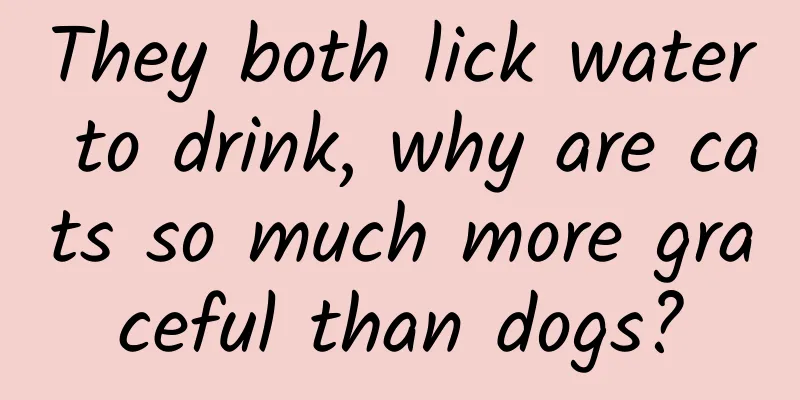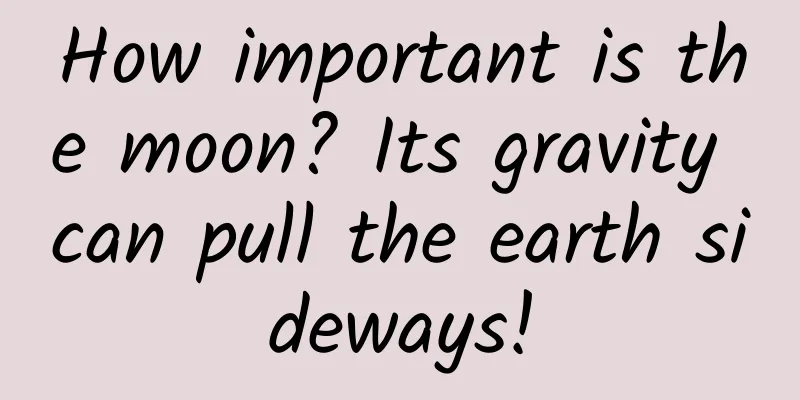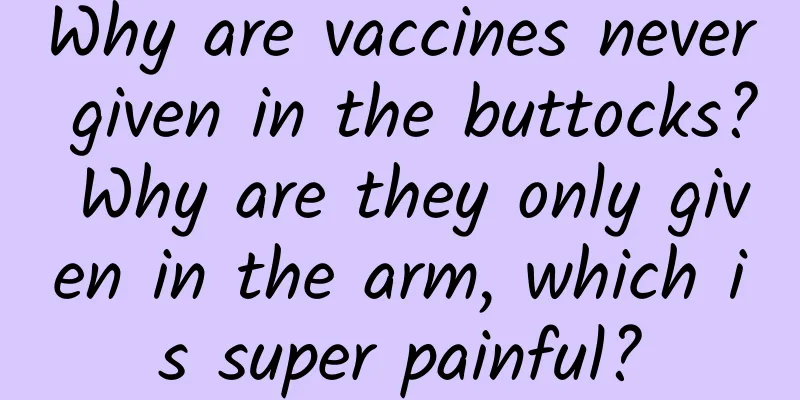They both lick water to drink, why are cats so much more graceful than dogs?

|
At first glance, you would think that there is no difference between cats and dogs drinking water, they both lick it with their tongues. Copyright image, no permission to reprint Copyright image, no permission to reprint The reason why dogs and cats choose to lick water instead of sucking it is that carnivores such as cats and dogs have much fewer facial muscles than humans. After weaning, they cannot seal their mouths to generate suction, so they must rely on their tongues to send water into their mouths. If you simply observe cats and dogs drinking water, there is not much difference. They both stick out their tongues and make licking movements. But if you introduce the research methods of fluid mechanics, you will find that cats and dogs drink water differently. 01 How do cats drink water? In 1940, the Ambassador Hotel in Los Angeles hosted the 12th Academy Awards. That year, David O. Selznick's Gone with the Wind won 13 awards, including the Best Picture, and was undoubtedly the biggest winner of the year. What does this have to do with cats licking water? What I want to talk about is not Gone with the Wind, but the best short film of the Oscar that year, Quicker 'na Wink. This short film introduces a photography technique - stroboscopic photography, which uses the continuous flash of an electronic flash to record the continuous movement of an object on the screen. **Due to the action of a moment, dozens of images will appear on the screen at the same time under the effect of stroboscopic photography, so it can show the movement process that the human eye cannot see. The short film shows slow motions of different objects, such as the moment an egg falls on a paddle and breaks, the moment a needle punctures a bubble, etc. Among them, at 4 minutes and 30 seconds, a black and white kitten licks milk. Through stroboscopic photography, the cat's high-speed licking moment is shown in slow motion. Copyright image, no permission to reprint However, this video is far from answering the question of how cats lick water! After all, this is just a short video, showing only an abstract process, without any data-based description, and it is not scientific. You have to know that this is a popular science article. Pedro M. Reis is a physics professor who is very interested in how cats lick water. After watching the stroboscopic photography video introduced above, he conducted a fluid dynamics study on cats licking water in 2010. He first found 10 cats and used a high-speed camera to capture every detail of their licking water, and then converted it into data for analysis. The following pictures show the process of cats licking water captured by high-speed cameras: Image source: Reference [1] You will find that during a single licking process, the cat's tongue tip does not extend into the liquid to scoop the milk into its mouth. Instead, the tongue tip is curled up to resemble a plane, and then by briefly touching the liquid surface, the water is "brought" to a stable height of 3 cm. Before the water falls due to gravity, the cat closes its mouth and holds the suspended water column. After licking the water 11 times, the cat completes the process of drinking water. The picture below shows the frequency of a cat licking water (the licking action starts from sticking out the tongue to closing the mouth). You can see that the licking frequency is quite stable, about once every 0.25 seconds. Image source: Reference [1] The maximum licking speed is about 78 cm/s (below). Image source: Reference [1] How is the water brought up by the tongue? Scientists believe that when the tongue touches the liquid at a certain speed and leaves, the water has a certain viscosity, and the transfer of momentum will cause some of the water to leave the water surface due to inertia, just like when a car brakes, it will throw a person out. During the rising process, due to gravity, the rising speed of the water continues to slow down and can only reach a certain height. In the entire force analysis, viscosity and capillary forces can be ignored. So when a cat licks water, it does not use its tongue to scoop the water into its mouth, but uses inertia to bring the water up and then hold it in its mouth. The frequency at which a cat licks water is just the perfect balance between inertia and gravity. If it licks water faster or slower, it will not be able to drink the most water. Copyright image, no permission to reprint In order to verify that their idea is correct, that the frequency of cats licking water is determined by gravity and inertia, scientists made a model to replicate the moment of licking water. The size of the disk on the model is the same as the area of the cat's tongue contacting the liquid surface. This model will vertically contact the surface of the water, and by changing the size and speed of the contact surface, they can observe the impact of these two factors on the volume of water brought up. Image source: Reference [1] Then scientists discovered that only when a cat licks water at the speed and frequency it touches and leaves the water surface, the volume of the rising water column is the largest. Therefore, the way cats lick water is the most scientific, although cats don't know what science is. Then scientists observed other cats, such as tigers, lions, and cougars, through Youtube, and found that cats lick water in a regular pattern and in accordance with a formula: f = 4.5 M ^− 0.14 , f is the frequency, M is the mass of the animal in kilograms. The formula can be simply understood as the heavier the cat, the lower the frequency of licking water. 02 How do dogs drink water? Dogs are not as graceful as cats when licking water. Similarly, scientists also observed dogs licking water through high-speed cameras. Under high-speed photography, it can be observed that the basic mechanism of dogs licking water is similar to that of cats, with the tip of the tongue bending backwards and then quickly touching the water surface to bring up the water. Copyright image, no permission to reprint Image source: Reference [2] In order to see more clearly how the water enters the dog's mouth, scientists even used an X-ray machine to take pictures. Since an X-ray machine was used, the water the dog drank must not be ordinary water, but a mixture of barium and milk. Now it can be clearly seen that the dog also used inertia to "lead" the water up with its tongue. Image source: Reference [2] But the difference between a dog and water licker is that when a dog licks water, it will put its tongue deeper into the water, and when it retracts its tongue, it will splash a lot of water. Also, because the dog's tongue goes deeper into the water when licking water, it gives people the illusion that the dog is scooping up the water with its tongue. To sum up, although cats and dogs have the same licking mechanism, when dogs lick water, they cannot control the depth of the water with their tongues, which will cause a splash, and at this time, they may make themselves and the floor wet; while when cats lick water, it will be a relatively stable column of water, and the action appears very clean. For example, if cats are divers who can control the splash, then dogs are just ordinary people diving. It seems that it is scientifically true that cats are more elegant than dogs, as can be seen from the splashes they make when drinking water. References: 1. Reis PM, Jung S, Aristoff JM, et al. How cats lap: water uptake by Felis catus[J]. Science, 2010, 330(6008): 1231-1234. 2. Crompton AW, Musinsky C. How dogs lap: ingestion and intraoral transport in Canis familiaris[J]. Biology letters, 2011, 7(6): 882-884. This article is produced by Science Popularization China, produced by Su Chengyu, and supervised by the Computer Network Information Center of the Chinese Academy of Sciences The cover image of this article is from the copyright gallery, and the image content is not authorized for reproduction |
<<: Lighthouse inheritance | Zhu An, son of Zhu Kezhen: Recalling his father's words and deeds
Recommend
20 points to pay attention to in mobile front-end development
[[164368]] Mobile front-end development is gradua...
Tesla: 1Q20 revenue increased 38% year-on-year, with strong performance in the Chinese market
According to Tesla's first quarter 2020 finan...
Neither running nor jumping, this action is actually the most harmful to the knees?
Unannounced Inspections Half squat for 10 seconds...
Android animation - cute candle blowing animation
1. Introduction Recently I started writing some a...
People who snore when sleeping, beware of 8 major hazards! Huaxi experts: Don't believe in drug treatment, what really works is...
Many people have had this experience. Sleeping wi...
In 2018, here are 3 essential marketing promotion rules!
Where will marketing go in 2018? Consumption and ...
The money-burning model of video websites "joining hands" with film and television companies is unsustainable
Recently, as Huace Film & TV suspended tradin...
Baoman Operation Manager: This is the difference between senior operations and junior operations!
The Nanjing branch of Baozou Comics is mainly res...
China Automobile Dealers Association: In the first quarter of 2020, domestic passenger car dealers sold 3.19 million vehicles, a year-on-year decrease of 42%.
In the first quarter of 2020, domestic passenger ...
Smartisan Phone: The next Xiaomi?
It is late May, and the wave after wave of mobile ...
Seafood: It was the first time I realized that my hometown was Xinjiang丨Great country technology style
Welcome National Day The "artificial sun&quo...
Summary of Apple Pay security strengths and weaknesses
Keeping credit card numbers out of the transactio...
Operational addition and subtraction that you must know
This year, a large part of my work focus has been...
iOS 17 update crashed, many models experienced problems such as heating and fast battery consumption
The official version of iOS 17 is finally release...









